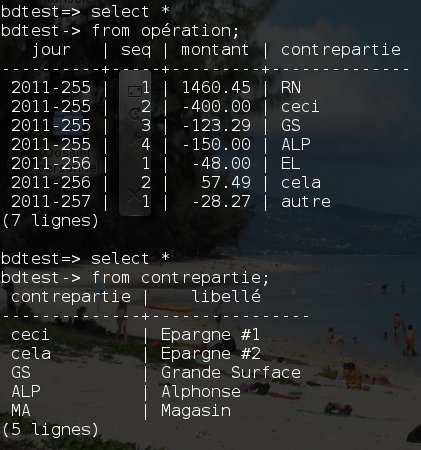Create Table Using Another Table. The new table gets the same column definitions. All columns or specific columns can be selected. If you create a new table using an existing table , the new table will be filled with the existing values from the old table.

In the standar temporary tables are defined just once and automatically exist (starting with empty contents) in every session that. In this case, you want to create a new table. Then in brackets comes the list defining each column in the table and what sort of data type it is. The syntax becomes clearer with the.
The TEMPORARY keyword is for creating a temporary table, which we will discuss in the temporary table tutorial. Next, you list the column name, its data type, and column constraint. The SELECT INTO statement creates a new table and populates it with the result set of the SELECT statement. SELECT INTO can be used to combine data from several tables or views into one table. It can also be used to create a new table that contains data selected from a linked server.
The PRIMARY KEY constraint uniquely identifies each record in a table. Primary keys must contain UNIQUE values, and cannot contain NULL values. This table_name is used for referencing the table to execute queries on this table. N are the column names of the table.
The tasks table has the following columns: The task_id is an auto-increment column. If you use the INSERT statement to insert a new row into the table without specifying a value for the task_id column, MySQL will automatically generate a sequential integer for the task_id starting from 1. The title column is a variable character string column whose maximum length is 255. Also called a rowstore index because it is either a clustered or nonclustered B-tree index. And at the end of the article, you can immediately continue to the next article where you can learn how to import data into these SQL tables.

SQL is the Standard Query Language for manipulating, storing and retrieving data in databases. SQL stands for Structured Query Language. Each table contains one or more columns. Tables are uniquely named within a database and schema. The definition must include its name and the names and attributes of its columns.
Microsoft SQL Server lacks the function of create table if not exist, meaning table creation queries will fail if the table already exists. You could drop the table before creating it, but again, you may run into problems if the table does not exist. This function can be used to test if the table exists an if it does not exist, create it.

A TEMPORARY table is visible only within the current session, and is dropped automatically when the session is closed. You can use the TEMPORARY keyword when creating a table. For more information, see Section 13. Un tableau est une entité qui est contenu dans une base de données pour stocker des données ordonnées dans des colonnes.
CREATE TEMPORARY TABLE Syntax”. If a table with the same name already exists in the database, an exception is thrown. TEMPORARY The created table will be available only in this session and will not be persisted to the underlying metastore, if any. Summary: in this tutorial, you will learn how to use SQL Server table -valued function including inline table -valued function and multi-statement valued functions. What is a table -valued function in SQL Server.
The return type of a table -valued function is a. When we write code, we sometimes use temporary tables. Using a temporary table is a convenient way to store intermediate , and then use them at a later phase in our application logic. When using temporary tables without specifying a collation (for the column used) SQL Server will inherit the. All data for a column must be of the same type.
You provide a name for the table. If the table name is not a valid system object name, you can use the optional FOR SYSTEM NAME clause to specify a system name. A table in SQL is a keyed or non-keyed physical file. Hello, and welcome to this introduction about SQL Server.
I’ll be taking you through this course. To create the recipes database, we first need to create a database to work in. For our example we are going to partition the table based on the datetime column.
Here is the code to create these objects and check some of their metadata in the system views. So far, you have learned various ways to query data from one or more table in the sample database. It is time to learn how to create your own tables.
In a relational database, data is stored in tables. Given that there is no way for the database vendor to know ahead of time what your data storage needs are, you will for sure need to create tables that fit your needs in the database.
Brak komentarzy:
Prześlij komentarz
Uwaga: tylko uczestnik tego bloga może przesyłać komentarze.